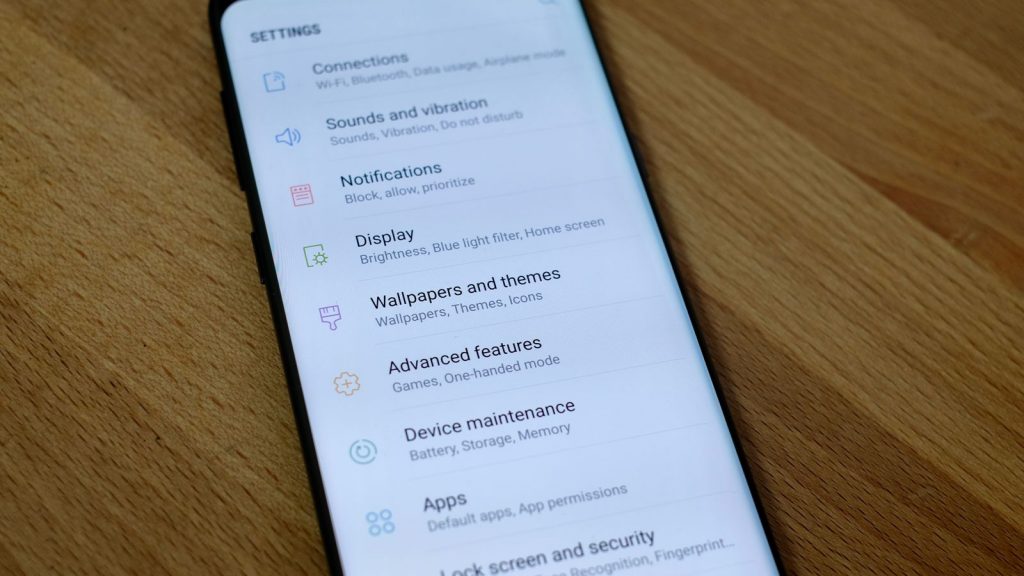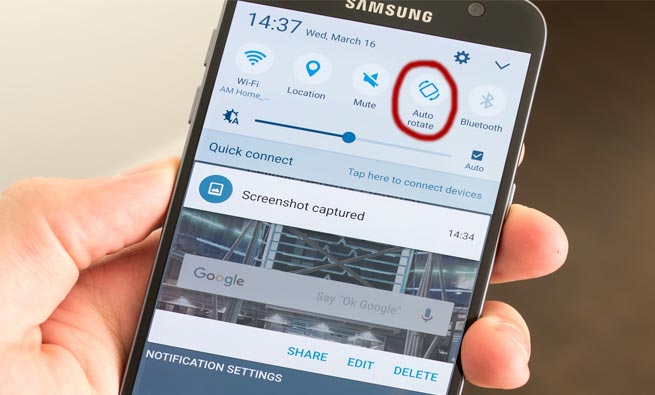Are you experiencing auto rotation issues on your Samsung Galaxy S8? Don’t worry, you’re not alone. Many users encounter this common problem, but the good news is that there are several solutions you can try yourself. In this guide, we’ll walk you through various methods to fix the auto rotation problem on your Galaxy S8.
Auto rotation allows your Samsung Galaxy S8 to adjust the screen orientation automatically when you rotate your phone. However, if this feature stops working, it can be quite frustrating. The causes of auto rotation issues can vary from software glitches to hardware problems. Before assuming it’s a hardware issue, it’s worth trying some troubleshooting steps to fix the problem.
Check the Portrait Lock and Auto-Rotate Settings
The first thing to check is whether you have accidentally turned off the auto rotate feature or enabled the portrait lock. Here’s how you can verify and adjust these settings:
- Pull down the notification center from the top of the screen.
- Look for the auto rotate and portrait lock icons.
- If the portrait lock is enabled, tap on it to disable it.
- Tap on the auto rotate icon to enable it.
By ensuring these settings are correctly configured, you might be able to resolve the auto rotation problem on your Galaxy S8.
Reboot Your Galaxy S8
If adjusting the settings didn’t fix the issue, the next step is to reboot your Galaxy S8. Restarting your phone can often resolve minor software bugs that may be causing the auto rotation problem. To reboot your Galaxy S8, follow these steps:
- Press and hold the power key until a menu appears on the screen.
- Tap on the “Restart” option from the menu.
- Confirm your decision by tapping “Restart” again.
After the reboot, check if the auto rotation issue has been resolved.
Calibrating the G Sensor
Auto rotation relies on the phone’s G sensor and accelerometer to detect changes in orientation. If these sensors are not properly calibrated, the auto rotation feature may not work correctly. To recalibrate the G sensor on your Galaxy S8, follow these steps:
- Go to the Settings app on your Galaxy S8.
- Scroll down and click on “Calibrate.”
- Place your phone on a flat surface before proceeding with the calibration.
Recalibrating the G sensor may help resolve the auto rotation issue on your Samsung Galaxy S8.
Clearing TouchWiz Data
TouchWiz is an essential app that manages various functions on your Galaxy S8. If TouchWiz is not functioning correctly, it can affect the auto rotation feature. Clearing the TouchWiz data can often fix these issues. Here’s how you can clear the TouchWiz data on your Galaxy S8:
- Go to the Settings app.
- Tap on “Applications” and then “Application manager.”
- Scroll down and tap on “TouchWiz.”
- Tap on “Clear cache” to remove all the cache files.
- Tap on “Delete data” to clear all the saved data of the TouchWiz app.
By clearing the TouchWiz data, you can eliminate any bugs or glitches that may be interfering with the auto rotation functionality.
Updating Your S8
Keeping your Galaxy S8 updated with the latest software is always a good practice. Software updates often include bug fixes and improvements that can address issues like auto rotation problems. To update your Galaxy S8, follow these steps:
- Go to the Settings app on your phone.
- Scroll down and tap on “About.”
- Tap on “Update Manually.”
- Your phone will check for updates and notify you if an update is available.
- Tap on “Download and Install” to install the latest updates.
Updating your Galaxy S8 may resolve any software-related issues causing the auto rotation problem.
Safe Mode
Sometimes, third-party applications can interfere with the auto rotation feature on your Galaxy S8. To determine if a specific app is causing the problem, you can boot your phone into safe mode, which disables all third-party apps. Here’s how you can enter safe mode on your Galaxy S8:
- Turn off your device.
- Press and hold the power button until you see the Samsung logo.
- Immediately press the volume down button and continue holding it until your phone restarts.
- Your phone will boot into safe mode.
While in safe mode, check if the auto rotation issue persists. If the problem is resolved in safe mode, it indicates that a third-party app is causing the problem. Uninstall recently installed apps or apps that have permission to control auto rotation to identify the culprit.
Hardware Issue
If none of the above methods have resolved the auto rotation problem on your Galaxy S8, it’s possible that there is a hardware issue. In this case, it’s recommended to take your device to a Samsung help center for inspection and repair. If your phone is still under warranty, you may be eligible for a replacement.
Conclusion
Auto rotation issues on your Samsung Galaxy S8 can be frustrating, but there are several steps you can take to fix the problem. By checking the portrait lock and auto-rotate settings, rebooting your device, calibrating the G sensor, clearing TouchWiz data, updating your phone, and entering safe mode, you can troubleshoot and resolve most software-related auto rotation problems. However, if these methods don’t work, it might indicate a hardware issue that requires professional assistance.
Remember, it’s always a good idea to keep your phone updated and avoid installing unreliable apps that may interfere with the normal functioning of your Galaxy S8. By following the steps outlined in this guide, you can regain the convenience of auto rotation on your Samsung Galaxy S8.





